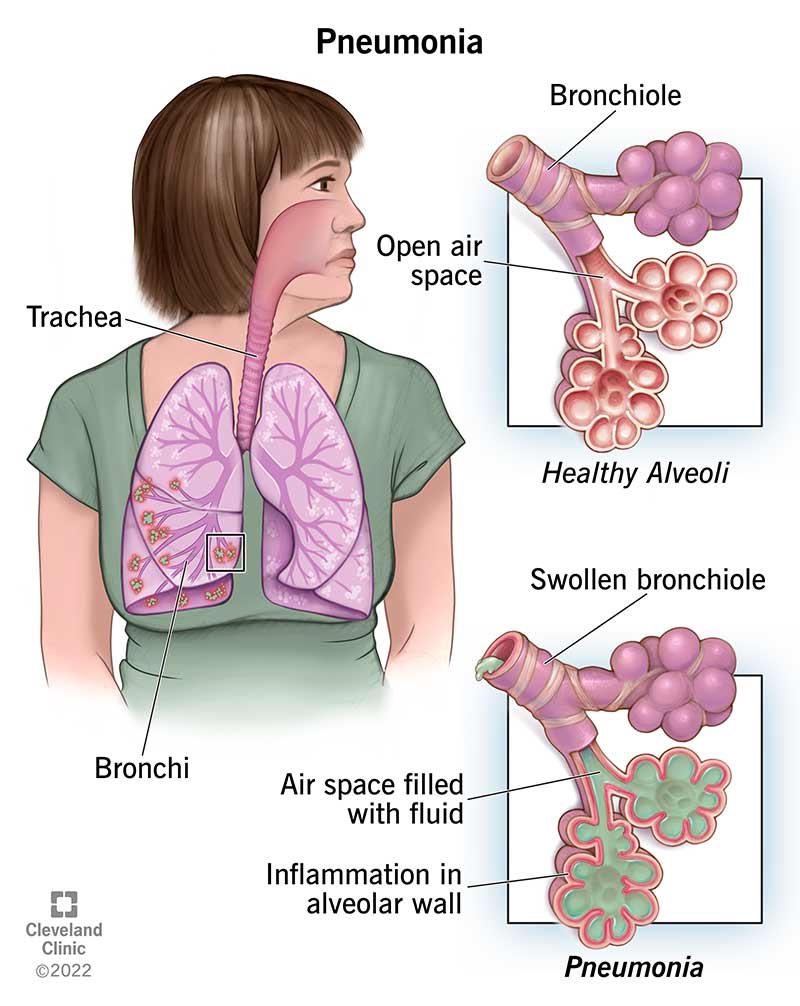The client diagnosed with pneumonia develops pleuritic chest pain. Which nursing action should the nurse implement at this time?
Notify the physician immediately.
Increase the oxygen from 2 to 4 liters/minute.
Teach about splinting the chest when coughing.
Obtain an electrocardiogram.
The Correct Answer is C
Choice A reason:
Notifying the physician immediately is not the first action to take. While it is important to keep the physician informed, the nurse should first implement measures to alleviate the client’s pain and discomfort.
Choice B reason:
Increasing the oxygen from 2 to 4 liters/minute may be necessary if the client is experiencing hypoxia, but it is not directly related to managing pleuritic chest pain. The primary focus should be on pain relief and comfort.
Choice C reason:
Teaching about splinting the chest when coughing is the most appropriate action. Splinting helps to reduce pain by stabilizing the chest wall during coughing, which can be particularly painful for clients with pleuritic chest pain.
Choice D reason:
Obtaining an electrocardiogram (ECG) is not immediately necessary for managing pleuritic chest pain caused by pneumonia. An ECG may be indicated if there are concerns about cardiac issues, but it is not the primary intervention for pleuritic pain.

Nursing Test Bank
Naxlex Comprehensive Predictor Exams
Related Questions
Correct Answer is A
Explanation
Choice A reason:
Sitting upright is the best position for a respiratory assessment. This position allows for optimal lung expansion and makes it easier to auscultate breath sounds accurately. It also helps in observing the client’s breathing pattern and effort.
Choice B reason:
Semi-Fowler’s position, where the head of the bed is elevated to 30-45 degrees, is often used for clients with respiratory issues to promote lung expansion and reduce the risk of aspiration. However, it is not as effective as the sitting upright position for a thorough respiratory assessment.
Choice C reason:
The supine position, where the client lies flat on their back, is not ideal for a respiratory assessment. This position can limit lung expansion and make it more difficult to hear breath sounds clearly.
Choice D reason:
The side-lying position is also not suitable for a respiratory assessment. This position can cause uneven lung expansion and make it challenging to assess both lungs accurately.
Correct Answer is ["B","C","D","E"]
Explanation
Choice A reason:
Avoiding playing with the grandchildren is not necessary for clients with emphysema. While it is important to avoid strenuous activities that can exacerbate symptoms, engaging in light activities and spending time with family can improve mental health and overall well-being.
Choice B reason:
Small frequent meals are recommended for clients with emphysema. Eating smaller meals more frequently can help prevent bloating and discomfort, which can make breathing more difficult. This approach also ensures that the client maintains adequate nutrition without overexerting themselves during meals.
Choice C reason:
Proper use of home oxygen as prescribed is crucial for clients with emphysema. Oxygen therapy can help maintain adequate oxygen levels in the blood, reduce shortness of breath, and improve overall quality of life. Clients should be educated on how to use their oxygen equipment correctly and consistently.
Choice D reason:
Smoking cessation is the most important step for clients with emphysema. Smoking is the primary cause of emphysema, and quitting smoking can slow the progression of the disease, improve lung function, and enhance overall health. Support and resources for smoking cessation should be provided.
Choice E reason:
The importance of a regular exercise program cannot be overstated for clients with emphysema. Regular exercise, particularly pulmonary rehabilitation programs, can improve lung function, increase endurance, and enhance the ability to perform daily activities. Exercise programs should be tailored to the client’s abilities and limitations.
Whether you are a student looking to ace your exams or a practicing nurse seeking to enhance your expertise , our nursing education contents will empower you with the confidence and competence to make a difference in the lives of patients and become a respected leader in the healthcare field.
Visit Naxlex, invest in your future and unlock endless possibilities with our unparalleled nursing education contents today
Report Wrong Answer on the Current Question
Do you disagree with the answer? If yes, what is your expected answer? Explain.
Kindly be descriptive with the issue you are facing.
